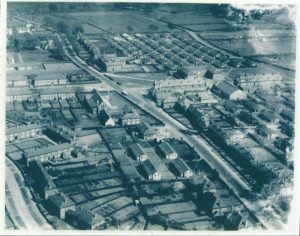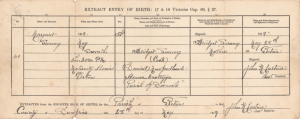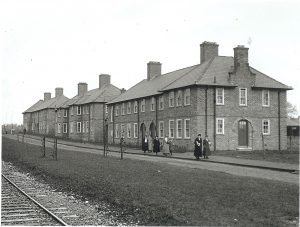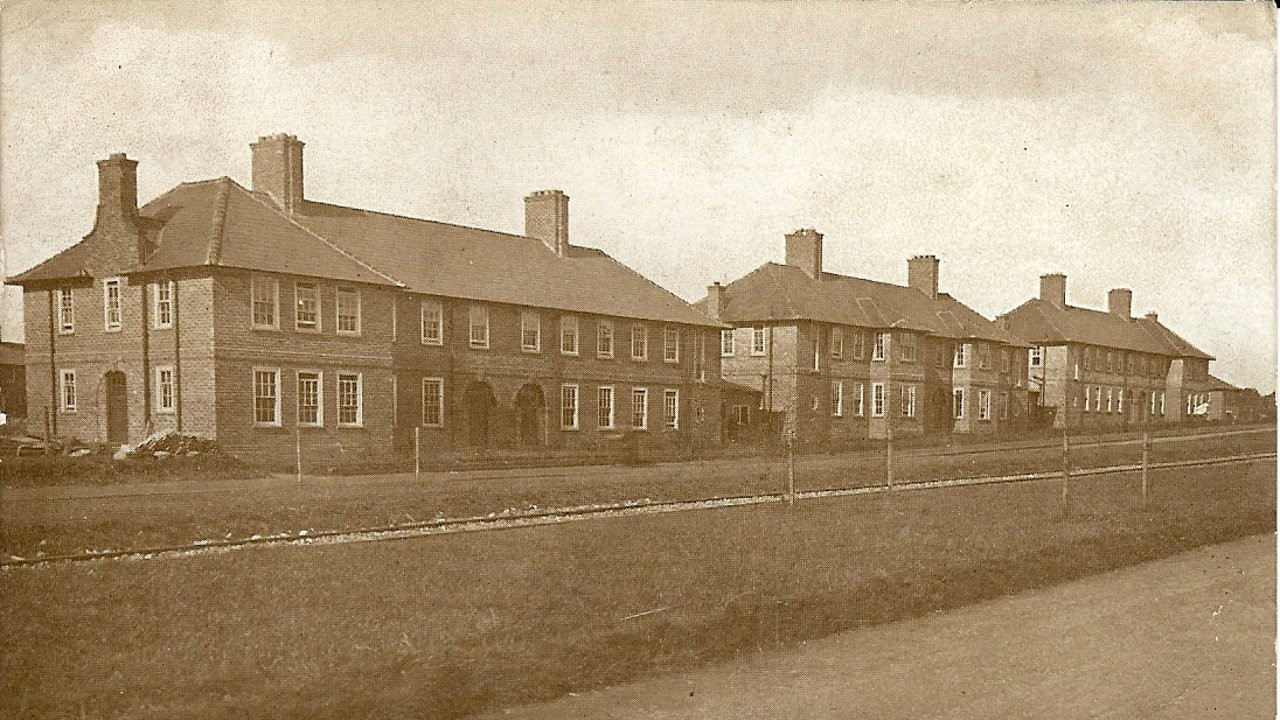
A recent visitor to the Museum sent us a photo of their mothers Birth certificate who used to work at the munitions factory at Powfoot during the Second World War. The visitor was researching their family tree when they discovered that one of their mothers three sisters (who her mother never mentioned) also worked in a munitions factory. The visitor’s mother (Margaret or Peggy Sweeney) was born at the end of World War One. Her mother (Bridget Sweeney) worked in one of the hostels for munitions girls in Eastriggs (Newfoundland House). She was a cook as shown in Peggy’s birth certificate (below).
These are photographs of Margaret or Peggy Sweeney as a child and young woman.
The accommodation for the workers at HM Factory Gretna varied as many wooden huts were built to be used as hostels but also a number of brick hostels were made to house more people, these brick hostels lasted for a long time and the majority of them stand today and have been split up into houses after being sold off after the war. The brick hostels had a matron and a cook to make sure that the workers were looked after and fed properly, each hostel was named after a famous figure such as Wellington, Kitchener and Wolfe which were all situated on Victory Avenue in Eastriggs.
The hostels were built very quickly by the Irish Navvies who came to Eastriggs and Gretna to build the Factory site. Even the brick hostels were built very quickly as stated in this account: “I remember when all the navvies were there building….. we were coming on shift one morning and they were starting to build a block and when we came off in the afternoon it was all up, the whole block was built, you know, the hostels, it was all built while we were at work, all built in a day, there were hundreds of men there.” – Mary Ellen Halliday, who started working in the factory in 1916 aged 19.
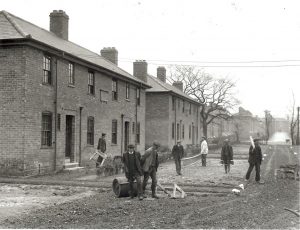
When Sir Arthur Conan Doyle visited the Factory and hostels he said this about the way they were laid out “A considerable nucleus of solid brick houses which should be good for a century or more…. radiating out from this centre are long lines of wooden huts to hold the workers, cottages for the married couples, bungalows for groups of girls and hostels which hold as many as seventy in each. This central settlement is where people live – North and South of it is where they work.”
